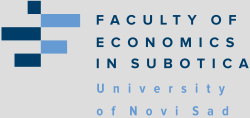STRATEGIC MARKETING TRENDS OF 2023 IN HUNGARY
SENSITIVITY, FLEXIBILITY, AND INTEGRATED SOLUTIONS ARE DESPERATELY NEEDED
DOI:
https://doi.org/10.46541/978-86-7233-416-6_65Keywords:
functional strategy, marketing strategy, communication strategy, value creation, functions of marketingAbstract
Abstract: The classic tasks of functional strategies are, on the one hand, to support the achievement of company and business objectives with a professional toolkit, and on the other hand, to guide and coordinate the tools, actors, and stakeholders of the functional area. At first level, this study examines what effects and trends those working in the marketing and communication functional area could be identified in today's highly variable natural, economic, and social (more precisely consumer) environment and how all these affect the company's target system, the periodic goals of the functional area, and its activity and device system. The investigation fits into a series of research that is carried out regularly for years on, which the Hungarian Marketing Association (HMA) conducts by interviewing marketing and communication decision-makers representing domestic and international brands among its members of large corporation level. At the beginning of each calendar year, for the seventh year now, the professional organization assesses what defining trends the professional decision-makers experience in their field, based on which they update and fine-tune their functional strategy. The research is usually conducted with the help of a discussion group methodology based on a cognitive approach. In January of this year, a total of 12 marketing and communication organizational leaders discussed their opinions on the topic, along a pre-compiled guideline, which primarily aimed to identify and clarify the defining functional strategic trends of the Hungarian market. The participants represented the FMCG, gaming, telecommunication, retail, banking, and service markets, while half of them represented global market players operating in Hungary. The guideline was based on an extensive, current literature review and a preliminary gathering of trends. Based on the discussion, the following five focus areas were determined, which strongly effect the current strategic direction of marketing and communication functions: value-based business decisions, the priority role of inshore or offshore services, the responsible construction and management of data assets, the role of creativity in day-by-day solutions at different levels, and finally the stability of the company and brands. In addition to this, the decision-makers emphasized the strategic function of marketing, since the power of brand value and mental availability play an even more important role than before when consumers decide which products are included in and out of customer basket of offline or online channels. In addition to their immediate practical applicability, the results can also form the basis of further, more extensive, quantitative research, as well.



